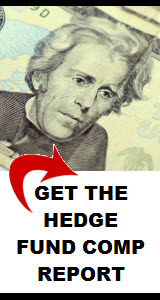Hedging risk has been a part of financial markets for over two centuries. In the 1800s, commodity producers and merchants began using forward contracts to protect themselves against price changes, a system that’s still in place today.
The actual term “hedge fund” is credited to Alfred Winslow Jones. In 1949, Jones was a reporter for Fortune magazine. He wrote an article about how investors could achieve higher returns if they use short selling and leverage, in addition to betting long on stocks.
To prove his theory, Jones raised $100,000 from friends, including $40,000 of his own money, and formed an investment partnership. His goal was to minimize the risk of holding long-term stock positions by short-selling other stocks, and to enhance returns using leverage. His approach is now referred to as the classic long-short equities model. Jones also pioneered a compensation scheme whereby 20 percent of the profits would go to the manager. The profit-sharing system was designed to align the goals of the fund manager with that of investors, and remains popular today.
Jones’ innovations, from combining short selling to the limited partnership structure and 20 percent incentive fee for the manager earned him fame as the father of modern day hedge fund investing.
A year after starting his fund, Jones earned 17.3 percent. Over the next decade, his fund reportedly outperformed mutual funds by more than 80 percent. Jones’ success remained relatively unknown until an article appeared in Fortune magazine in 1966 that detailed his remarkable track record. His theories, along with his performance-based compensation structure, caught the eye of both high net worth investors and competitors, and soon many other hedge funds sprung up. By 1968, the Securities and Exchange Commission listed 140 investment partnerships that it considered to be hedge funds.
In the mid-1980s, investors such as Julian Robertson and George Soros made headlines by out-performing the public markets using high-return strategies and unregistered investment funds. Investors flocked to the hedge fund industry, which now offered thousands of funds and an increasing number of sophisticated investment strategies, including global macro, currency trading, derivatives, futures and options.
George Soros achieved a particular notoriety. Soros, who co-founded the Quantum Fund with Jim Rogers, started making spectacular profits by tracking changes in the global macroeconomy. He bet on changes in interest rates, exchange rates, economic developments and commodities prices. In 1992, his Quantum Investment Fund shook the markets when he bet $1 billion on the devaluation of the British pound. The speculative move forced Britain to pull out of the Exchange Rate Mechanism (Europe’s pre-euro monetary stabilization system). It spiked interest rates by 5 percent in a matter of hours and cost the U.K. Treasury billions, but made Soros a fortune and a household name.
Soon after that, the prime minister of Malaysia blamed Soros for triggering the Asian Financial Crisis. Prime Minister Mahathir Mohamed called him a “rogue speculator” for shorting the Thai baht and roiling the Asian financial markets.
Next time, we’ll look at the collapse of Long-Term Capital Management and examine current trends in the hedge fund industry.
{ Comments on this entry are closed }





